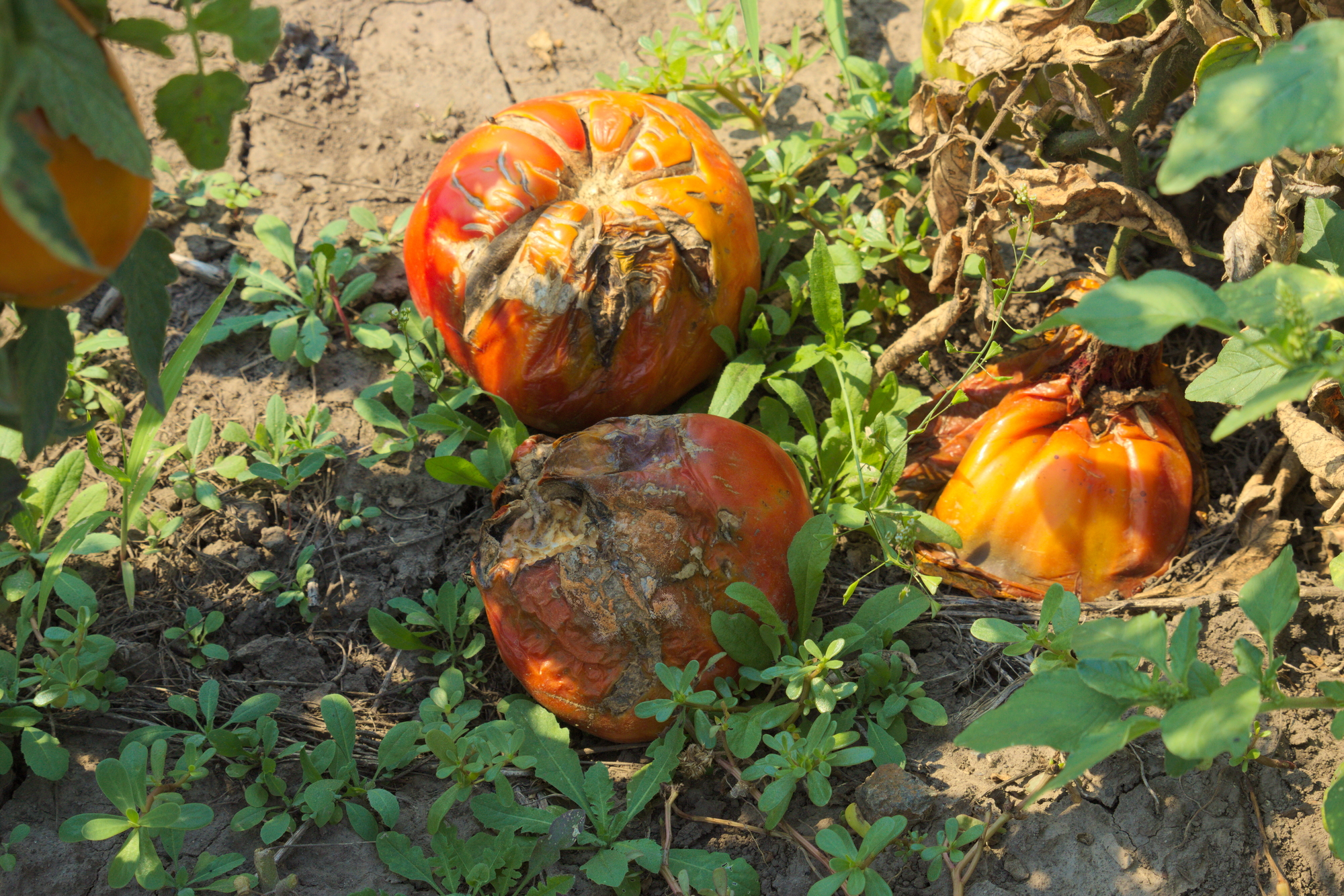So many diseases…so little time!
Tomatoes seem to be that one plant that that is constantly plagued by disease. The list of ailments seems endless, and the symptoms are so similar it can be difficult to diagnose. What we do know is that most disease begins with unhealthy soil.
The most common disease by far is Early Blight which is caused by a fungus. Interestingly enough these fungus, called Alternaria solani or Alternaria tomatophila , are actually good guys in the grand scheme of gardening. The fungus is actually responsible for plant decomposition. If it did not exist, our compost piles would never break down.
The reason it becomes an invader of tomatoes, as well as other vegetables, is actually due to poor soil health. When your soil is healthy it’s able to support the nutritional needs of the rapidly growing, heavy feeding tomato plant. But when it is not healthy, the plant will start to steal nutrients from the bottom leaves of the plant and send it upward to nourish new growth. When the bottom leaves begin to die of malnutrition it’s a signal to the fungus that it needs to start decomposing the plant. Rain and overhead watering transport fungus spores by splashing them up from the soil onto the dying lower leaves where it attaches and begins the decomposition cycle.
So what are the signs to look for in early blight?
Symptoms will first appear on older leaves near the base of the plant. One or two ¼ to ½ inch in diameter spots with tan centers and concentric rings and yellow halos around the edges will appear and leaves will begin to drop. On the fruit, sunken spots appear near the stem with a concentric ring pattern around spots. Early blight tends to spread slowly.
And how do we treat it?
Early blight does not normally kill your tomato plant but, it can be a real pain to deal with. At the first signs of early blight, remove any lower infected leaves as well as non infected leaves up to about a foot above the ground level. Gently scrape away the top layer of soil around the plant and dispose of it in the trash. Replace the soil with a layer of fresh compost and put down a layer of mulch such as straw, grass clippings or newspaper. The mulch will act as a barrier to keep spores from splashing back up onto your plant when it rains. Remove any newly affected leaves or fruit as they may appear.
Late Blight unfortunately, is a completely different animal caused by a fungus called Phytophthora infestans. This fungus was responsible for the Irish potato famine in the 1840’s. Late bight will kill the tomato plant and spread through neighboring plants rapidly.
So what are the signs to look for in late blight?
In late blight pale green irregular shaped spots will appear on the on upper side of the leaf, usually near the edges of the leaves. Spots will turn brown to purplish-black and look velvety with pale green border on underside of leaf. On the fruit, spots develop beneath the skin on the tops and upper sides of green fruit. The spots become reddish-brown, firm, dry and leathery. As the spots grow larger the skin will wrinkle and darken and rot will set in. Late blight spreads rapidly and when spots appear on young leaves at the top of the plant death is imminent.
And how do we treat it?
Unfortunately, there is no effective home gardening treatment for late blight. If this dreaded fungus invades your tomatoes the only solution is to carefully remove the entire plant and either burn it or dispose of it in a sealed trash bag. Late blight spores spread easily, so remove the plant on a non windy day and be sure to wash any gloves or tools you may be using. Once late blight fungus invades your soil, it’s time to practice crop rotation the following year.
Overall, the best way to form a defense against blight is healthy soil. A diverse, living soil that contains an abundance of organic matter, micronutrients, beneficial bacteria and insects goes a long way to fending off a myriad of diseases. Fortifying your soil will help your plants build a strong immune system!
Diagnosis can be tricky so come see us at the garden center and we will be happy to help!

